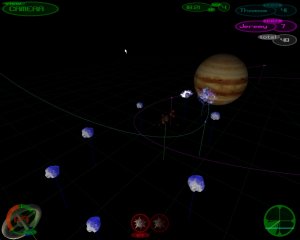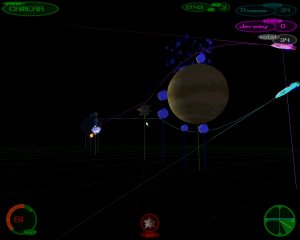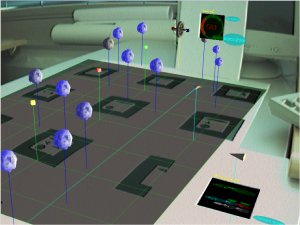| Summary | ||||
|
My current domain of research lies in the psychological investigation of communication and interaction. My interests range from the lowest levels of speech perception to the examination of collaborative behaviour. This involves the use of empirical experimentation and modelling, and also the design of new tools for the elicitation of empirical data. At the present time I am employed as a research assistant in the Geneva Interaction Lab at the University of Geneva, investigating the use of microworlds and Augmented Reality for the study of collaboration. I also have a continuing interest in the area of syllabic segmentation, in collaboration with the experimental psycholinguistics laboratory. |
||||
| Collaboration and Interaction | ||||
One of the problems in the investigation of behaviour during collaboration is the design of controlled and repeatable experiments that maintain ecological validity. That is, to design an experimental environment which would allow complete control, and analysis, of all communication and interaction in collaborative teams whilst allowing the presentation of complex problem solving tasks and maintaining subject motivation. To this end the SpaceMiners experimental platform was was developed at the Geneva Interaction Lab. SpaceMiners is a microworld environment designed to elicit and record collaborative behaviour. All tasks, interaction, and instruction are encapsulated in the microworld, allowing complete control of the collaborative environment, and a full record of all user interaction. In the case of SpaceMiners, the microworld represents an interactive problem solving game. The use of the game paradigm was chosen to make the task enjoyable to the user, thus maintaining high levels of motivation amongst subjects. Experimentation Current research topics under investigation using the SpaceMiners experimental platform include:
|
||||
| Mixed Reality | ||||
|
||||
| Syllable Segmentation | ||||
|
Current research in the area of psycholinguistics is directed towards the investigation of syllabification, the comparison between phonological models of syllable boundary placement and empirical data drawn from psycholinguistics experimentation. In my continuing study, an attempt has been made to judge the merits of the various principles and theories of syllabification applied to French, a syllable-timed language, by comparing the theoretical predictions of these theories with the experimental findings of a series of psycholinguistic syllable segmentation and perception experiments. A number of factors have been found to influence syllable segmentation. These include, the nature of intervocalic consonant clusters and singletons, with preference given to minimal legal syllable onsets, excepting OBLI clusters, which are tautosyllabic. The aperture of the vowel at the nucleus of a syllable, with an open vowel inducing closed syllables, and vice versa. Also, orthographic bias, which, at the onset of literacy can influence syllabification decisions in metalinguistic tasks. In addition, examination of the differences between the syllable onset and offset detection would appear to suggest that listeners are taking advantage of a number of separate cues when segmenting speech into syllables. Currently, an examination of the possible influences of stress upon syllabification in French is being conducted. Also, using the results gained from these studies a syllabary of the French language is being prepared, for publication and distribution. |
||||
| home |



